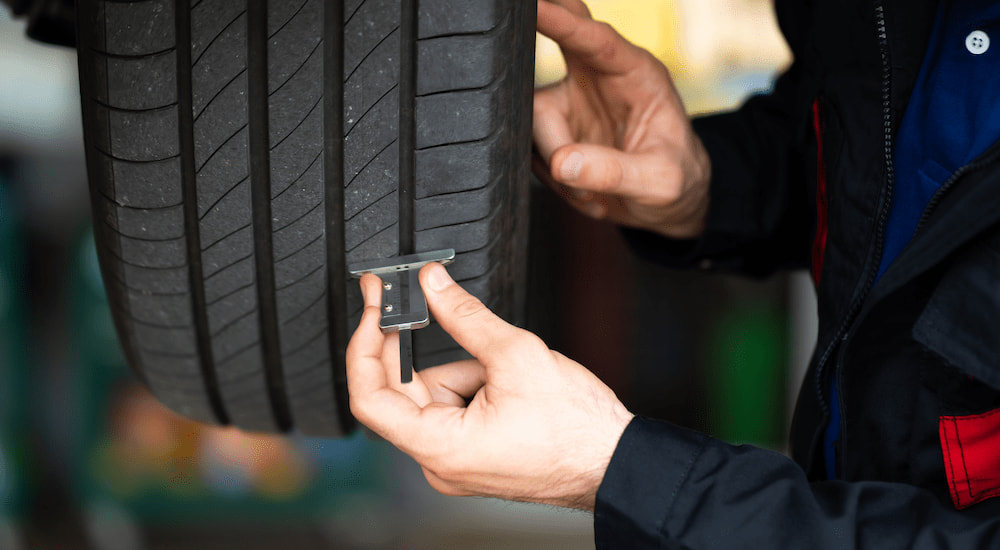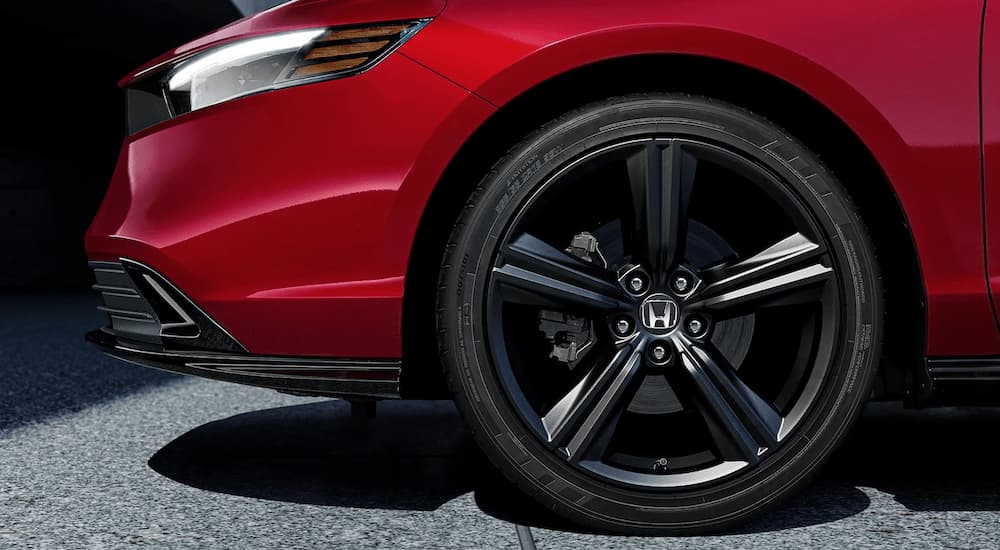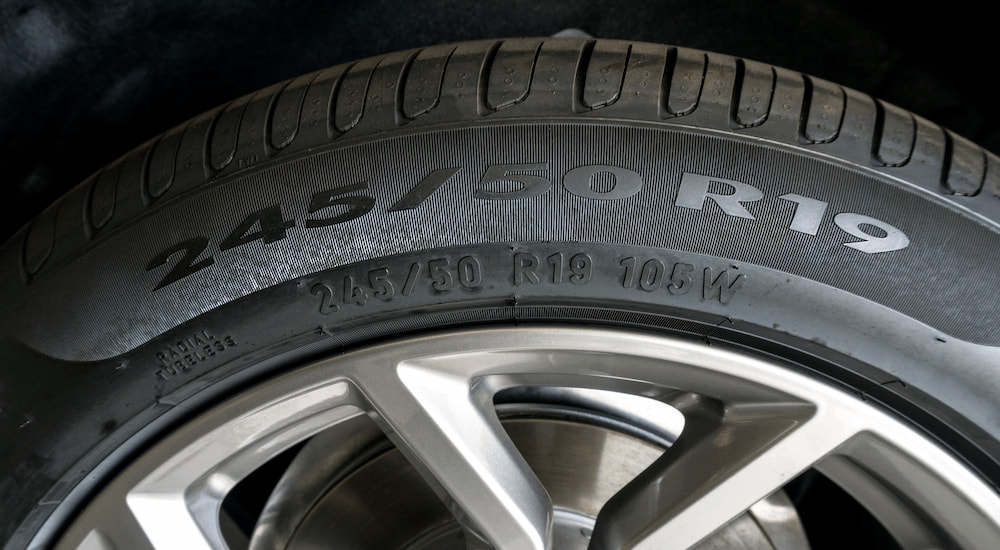Have you ever had one of those days where everything just seems to go wrong? You had a power outage last night, so your phone didn’t charge, which means it was dead in the morning, so your alarm didn’t go off—now you’re running late, get out the door, and discover you have a flat tire! Or maybe it’s worse: you get on the road only to have your tire burst while you’re driving, resulting in about the scariest drive to work you’ve ever had. Those kinds of days are the worst, but they don’t “just happen;” they’re typically the result of letting too many things go, and suddenly, it all catches up with us.
For example, if you’re the kind of person who likes to put off going to the tire shop for a new set, then it becomes a lot more likely that you’ll discover you need new ones the hard way. I understand how annoying it can be to find time on a work day—or worse, a day off—to have your tires rotated or replaced, but it’s essential for proper car maintenance. I like to put things off as much as the next person, but I’ve had my share of lessons learned the hard way, and I’m here to offer my advice to you. Learn from my mistakes; get ahead of an inevitable issue and take care of your car’s tires before they give up on you.

How Long Should Car Tires Last?
That’s a great question, and the answer is a bit straightforward but also rather complicated, like so many things in life. Generally, the best you can hope for from a tire is ten years at most, though vehicle manufacturers suggest replacing your tires after six years. The discrepancy there comes down to what’s likely compared to what’s possible; in other words, it’s possible that tires can last up to ten years, but it’s more likely that about six years is the most you should try to get from them.
Tires are made from rubber that’s been improved upon and carefully engineered over decades of development and innovation from brands like Michelin and Goodyear. Modern tires are far removed from the ones found in early automobiles, and they have designs that improve their longevity and help boost traction in a wide range of driving conditions. Beyond that, however, even the chemistry of the rubber that’s used has changed and evolved dramatically; modern tires are designed to last as long as possible, but nothing can stop the force of entropy.
No matter how innovative tires and the rubber in them might be, over time, they’ll still wear out and age. Daily driving takes its toll, and every moment you’re on the road, you’re subtly incurring damage to your tires. At best, you should replace your tires after six years of use because even if they look fine and still have decent tread depth (more on that in a moment), they’re getting worn down, and they’re likely to fail soon.
Even if you never drive on a set of tires, the rubber they’re made from will age and get brittle, which is why the absolute limit for how old tires should be is ten years. This is true for tires on a recreational vehicle and for your spare tire: if they’ve reached ten years old, then it’s time to replace them.
How to Tell When Tires Need to Be Replaced
We’ve talked about the age of tires so far, but there’s more to them than that, particularly when it comes to understanding their condition and when it’s time to replace them. Tread depth is just as important—arguably more important—as age when evaluating your tires and deciding when they need to be replaced.
The magic number is 2/32 of an inch; that’s the depth the tread of your tires should be when measured from the surface to the deepest part of the tread. If you take your car to a shop and have them check your tires, this is what they’re measuring—less than 2/32 of an inch means it’s time to replace them.
If you’ve ever heard of the “penny test” before, then this is what that’s measuring, and it’s an easy way to check your tread depth at home. Simply grab a penny and insert it into part of your tire’s tread with Lincoln’s head pointing down, then check to see how much of his head you can see. The top of his head should disappear into the tread; this means the depth is still good.
If you can see the top of his head, then your tread depth is less than 2/32 of an inch and it’s time for a replacement. It’s a good idea to check a few different spots of the tread on every tire since suspension issues or other factors can cause uneven tread wear.
For folks who prefer to be more proactive, using a quarter for the test rather than a penny works even better. You just do the same thing, inserting the quarter into the tire tread with Washington’s head pointing down, and you want to check for the top of his head. The advantage here is that if you can see the top of his head, then your tread is getting worn, but probably not at 2/32 just yet, so you have more time to shop for new tires. The quarter test gives more wiggle room; with the penny test, if you see the top of Lincoln’s head, then you need new tires immediately.
Determining the Age of a Tire
Since the other key factor is the age of your tires, we should probably talk about how to figure out how old your tires are, right? Fortunately, it’s quite simple: look at the sidewall of your tires, and you’ll find a code on it—there’s a bunch of other info, too, like the manufacturer, tire model name, and info about its size.
You’re looking for a code resembling “DOT XYZ ABC 4321.” Those first three letters signify the US Department of Transportation, while the following letters indicate the manufacturer and where it was made. What you need are those last four digits.
Those four digits indicate the week and year that the tire was made—the first two digits are the week, and the second two are the year. So, in the example I used, “4321” would mean that the tire was made in the 43rd week of 2021, which was the last week in October. These tires would be about two years old and should have plenty of life left in them, assuming they’re not too worn down or damaged in some way. On the other hand, if you see tires and the DOT code ends in something like “1712,” then you have tires made in 2012; those would be more than ten years old and should absolutely be replaced.
Keep Your Tires in Great Shape
The key to keeping your tires in the best condition possible is staying ahead of problems by knowing how old your tires are and checking their tread depth about once a month. Beyond that, how you drive has a big impact on how long your tires last, so do your best to avoid hitting potholes, curbs, and other obstacles that can damage your tires or throw your alignment off, which tends to cause uneven wear on tires. It’s also a good idea to avoid driving aggressively since frequent acceleration and hard stops wear out your tires a lot faster.
When it’s time for new tires, don’t hesitate—get new ones put on your vehicle as soon as possible to ensure you stay in control and don’t have a bad day turn into an awful one.





